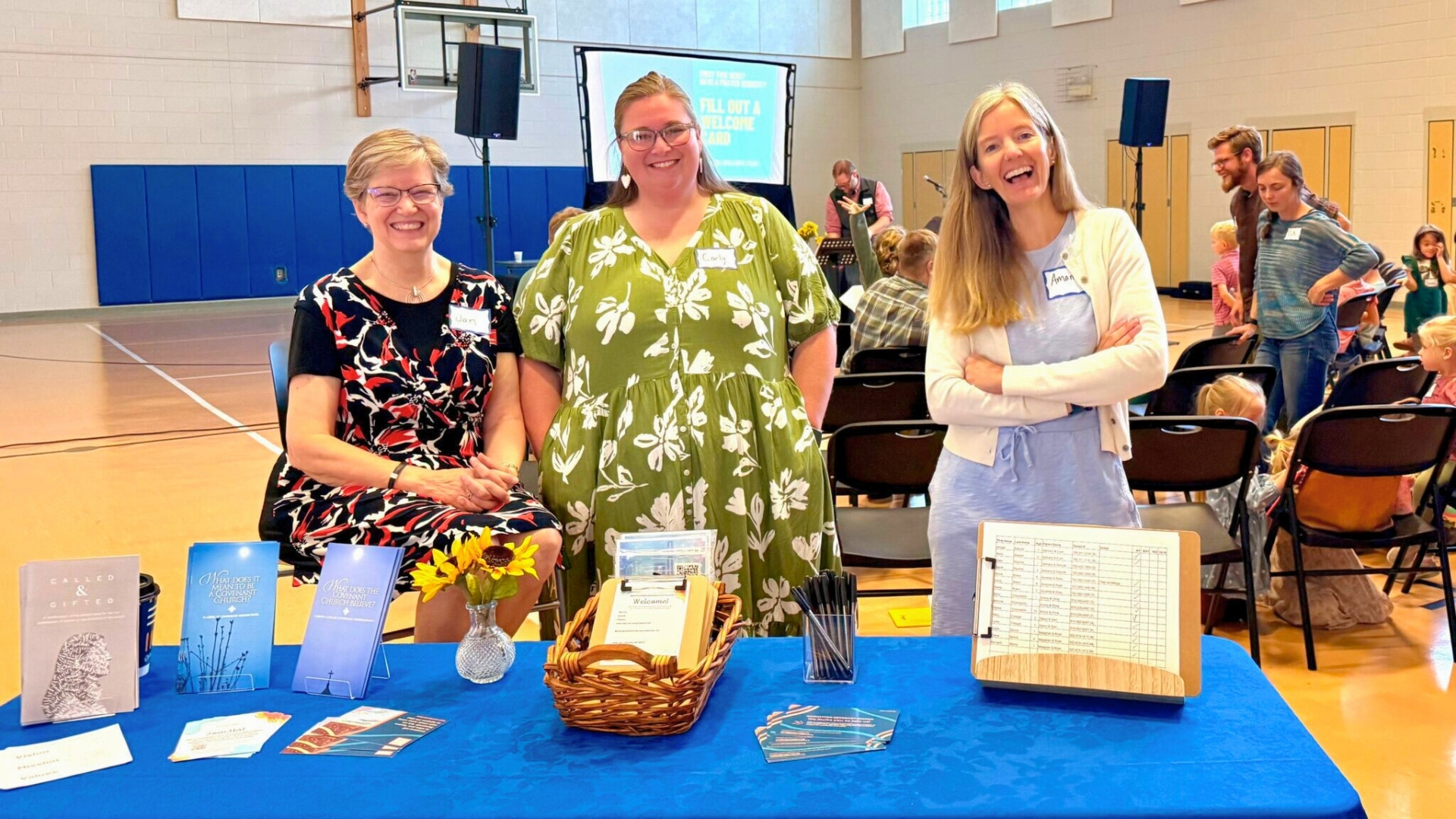An Introvert’s Approach to Sunday Morning Services
That moment when the pastor says, “Turn and greet someone seated near you.”
With churning stomach, I stand. The people in front of me begin talking to those seated in front of them. I turn around and the people behind are engaged with the people behind them. I look to my right, but that person is now in deep conversation. And my husband? He’s left my side and is working the aisle.
All around me there’s small talk and even some hugging. How long does this have to last? I mean, really, who doesn’t love shaking hands with a bunch of people who may not believe in flu shots? I note the irony in the fact that this congregational shaking of hands stems from the liturgical practice of “passing the peace”—there is very little peace in my little introverted brain over it. I make brief eye contact with my fellow introverts, sometimes a barely perceptible nod. Small talk and strangers are not for us.
In his foreword to Introverts in the Church, Scot McKnight writes, “Who designed the ‘Pass the Peace’ moment in the church tradition? Surely not an introvert.” Author and Presbyterian minister Adam S. McHugh goes on to illustrate how evangelical churches in western societies, and particularly in the United States, are geared to the extroverted personality. The emphasis is on community and connection rather than contemplation and solitude. Churchgoers are encouraged to share testimonies, reach out to others, raise their hands in praise, be leaders.
But what if that goes against who God made me to be?
As a child, I was often described as shy. When people said that, what I heard was, “Don’t bother trying to talk to her, it’s not going to be worth it.” Our culture values big personalities, adventurers—in short, extroverts. So I spent a lot of years striving to be outgoing, energetic, fun. Combatting the “Oh, she’s shy” label, I wanted to prove I was worth knowing. As McHugh writes, “ aren’t gregarious, excitable, or charismatic. We dislike crowds and loud stimulation.…It seems that extroversion gets to be defined by what it is, but introversion is too often defined by what it isn’t.”
Our culture values big personalities, adventurers —in short, extroverts.
The negativity associated with introversion is why I’m not the only one who has tried to disguise my introverted self. Susan Cain, author of Quiet: The Power of Introverts in a World That Can’t Stop Talking, says, “Depending on which study you consult, one-third to one-half of Americans are introverts—in other words, one out of every two or three people you know. If these statistics surprise you, that’s probably because so many people pretend to be extroverts.”
Reading Quiet for the first time several years ago, I finally found voice for many of my feelings about everything from working in small groups in high school to how I relate to extroverts. Introverts are wired not to just take in information but to filter emotion, thought, and experience into the process. Deep thinking requires a lot of energy. Most of all, Cain validated—gave value to—exactly who I am.
I’m learning to be comfortable in my introvertedness. Along the extrovert/introvert continuum, each of us lands somewhere. While I don’t think of myself as an ultra-introvert, I am definitely well past the midpoint on the introvert side. Sometimes people tell me I can’t be an introvert because they have seen me energetically teaching Sunday school, acting in crazy dramas, or spoofing a song in front of the whole church. They don’t understand that as long as I have a role or a job to do, I can be very comfortable. It’s when I have to spend a half hour making small talk in the narthex that I’m tempted to sneak out to the solitude of my car.
I understand the theological significance of that meet-and-greet time. The people in the pews around me are my faith family. They’re a big part of why I love my church and why I keep showing up each week. In some liturgical congregations passing the peace occurs between a prayer of confession and the sharing of communion—a beautiful symbol of how our sins against God and each other are cleansed before we approach the Table.
We are called to be part of the body. We need connection. So how do I navigate the parts of church that feel in opposition to my nature?
- Get over myself. If worship is just for me, then I’m free to be all up into myself. But if it’s for Christ and his body then I need to be part of that body. And God does not promise that we will be comfortable. Some of the best lessons I’ve learned have beenout of my comfort zone.
- Look for a buddy. Others are feeling just as awkward as I am. I can interact with them by asking real questions. Not just “How are you?” but something that taps into who they are. And then listen so that I can ask a follow-up question. Make it my goal to redeem the moment for them.
- Observe. It’s not a competition to see how many hands I can shake in the ninety-seven seconds spent passing the peace. Introverts are great people watchers. I learn a lot about my faith family by observing them. One woman in my church scurries around with a contagious smile, hugging everyone within reach. Enjoying the joy of others can be my offering of worship.
- Be tangible. As he closes his letter to the Romans, Paul repeatedly sends greetings to those he loves. In a brief word study, I found “greet” defined as “to meet or receive.” This receiving part implies touching—drawing to one’s self. I don’t need to go in for the holy kiss, but connection does happen by actually, tangibly connecting.
My husband, the handshaking aisle walker, is a high school soccer coach. After every game, win or lose, the players cross the field to shake hands with the other team as a symbol of good sportsmanship. It’s an intentional show of unity to say, “Despite what may have occurred on the field, we are okay with each other.” That custom provides an opportunity for young people to learn about respect and and character. It’s a way to practice naming worth in an “opponent,” finding restoration, and being at peace with others.
Peace. Isn’t that what’s at the heart of greeting one another in the worship service? We are reconciled to God and with each other because we can’t have a right relationship with God if we are not in right relationship with each other.
Peace be with you.














